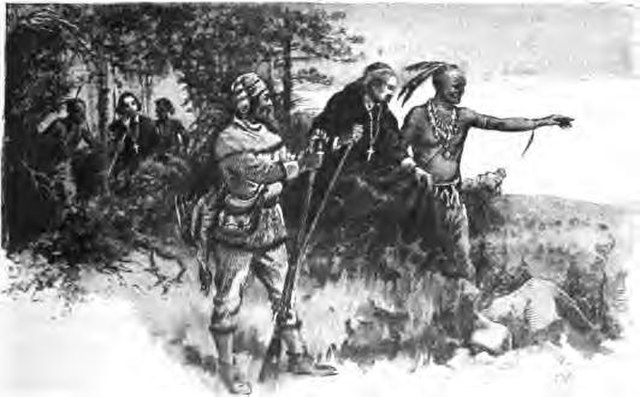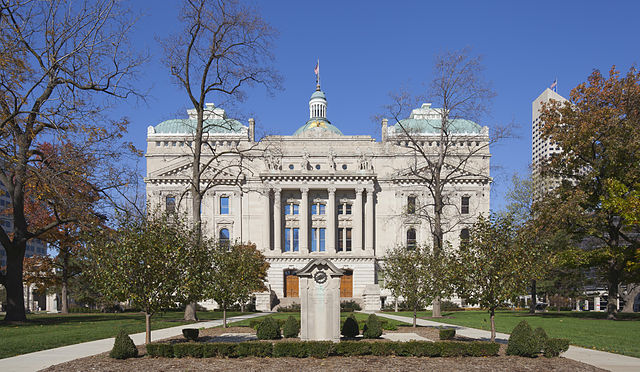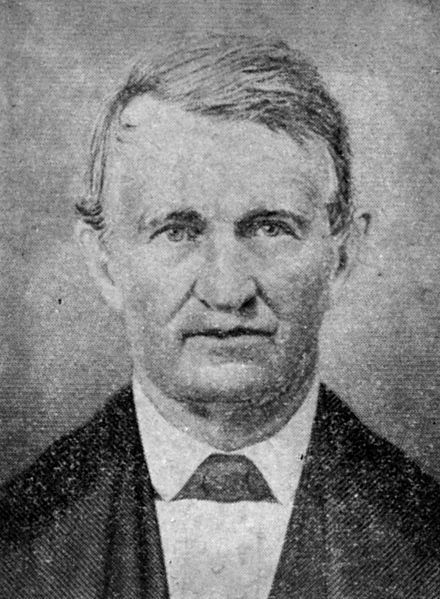Polly Strong was an enslaved woman in the Northwest Territory, in present-day Indiana. She was born after the Northwest Ordinance prohibited slavery. Slavery was prohibited by the Constitution of Indiana in 1816. Two years later, Strong's mother Jenny and attorney Moses Tabbs asked for a writ of habeas corpus for Polly and her brother James in 1818. Judge Thomas H. Blake produced indentures, Polly for 12 more years and James for four more years of servitude. The case was dismissed in 1819.
Native Americans guiding French Explorers through Indiana, Stories of Indiana, by Maurice Thompson
First State Capitol building in downtown Corydon, Indiana
The Indiana Supreme Court, established by Article 7 of the Indiana Constitution, is the highest judicial authority in the state of Indiana. Located in Indianapolis, the Court's chambers are in the north wing of the Indiana Statehouse.
Indiana State Capitol, host of the Indiana Supreme Court.
First Supreme Court chambers in the First State Capitol Building
Chief Justice Isaac Blackford (November 6, 1786 – December 31, 1859)
Portrait of the Indiana Supreme Court in their chambers in 1912. From left to right: Douglas Morris, Charles E. Cox, Chief Justice Leander J. Monks, Quincy Myers, and John W. Spencer.






